- Home
- W. Somerset Maugham
The Moon and Sixpence Page 2
The Moon and Sixpence Read online
Page 2
The main focus of the early chapters is, of course, on the Strickland family from which the painter surprisingly emerges, and it is meant to epitomize the dull, pretentious, and stifling life of society at large. Impelled by the aspirations of Mrs. Strickland, the household seems governed by mediocrity and oppressive conformity. The dining-room, like five hundred others decorated in the same “good taste of the period,” is “chaste, artistic and dull.” The children are “clean, healthy and normal,” with a father apparently so dull that his wife is reluctant to inflict his company on the guests at her many dinner parties, occasions which, in any case, are attended with indifference and left with relief. All in all, the Strickland family is a well-integrated and typical specimen of its class and milieu:
There was just that shadowiness about them which you find in people whose lives are part of the social organism, so that they exist in it and by it only. They are like cells in the body, essential, but, so long as they remain healthy, engulfed in the momentous whole. The Stricklands were an average family in the middle class. . . . Nothing could be more ordinary.
When the apparently ordinary Strickland abandons this conventional family, it is shocked and the social set, its boredom relieved by such drama, is delighted. In fleeing from domesticity and the society in which it is embedded, Strickland is typical of twentieth-century artist-heroes. Analyzing the artistry of the figures in A Portrait of the Artist as a Young Man and Proust’s Á la Recherche du Temps Perdu, Maurice Beebe has written:
In both instances . . . the hero attains this state only after he has sloughed off the domestic, social, and religious demands imposed upon him by his environment. Narrative development in the typical artist-novel requires that the hero test and reject the claims of love and life, of God, home and country, until nothing is left but his true self and his consecration as artist. Quest for self is the dominant theme of the artist-novel, and because the self is almost always in conflict with society, a closely related theme is the opposition of art to life. The artist-as-hero is usually therefore the artist-as-exile.
When the narrator is sent to Paris to persuade the absconded Strickland to return to his family, he goes armed with every appeal to the man’s social conscience, which he characterizes as “the guardian in the individual of the rules which the community has evolved for its own preservation. . . . It keeps watch over him, vigilant always in the interests of its master to crush any half-formed desire to break away from the herd. It will force him to place the good of society before his own. It is the very strong link that attaches the individual to the whole.” To his professed horror, the narrator discovers that Strickland has no qualms about abandoning his wife and children, that he in fact has no social conscience. “Here was a man,” he says, “who sincerely did not mind what people thought of him, and so convention had no hold on him; he was like a wrestler whose body is oiled; you could not get a grip on him; it gave him a freedom which was an outrage.”
In the Paris section of The Moon and Sixpence Maugham shows his artist-hero’s complete lack of conscience in Strickland’s behavior in different ways with Dirk and Blanche Stroeve. In one sense Stroeve represents the kind of art Strickland is rejecting: the “Master of the Chocolate Box,” Stroeve paints picturesque scenes of colorful peasants, urchins, and brightly petticoated women lounging on church steps or wandering through the Italian countryside. As if Impressionism had never arisen, his paintings are as realistic as photographs and are designed to “bring romance” into the homes of affluent merchants in northern Europe. Stroeve’s canvases, though “common and shop-soiled” and old-fashioned, are not outdated because there is always a widespread market for art which is familiar, comfortable, and reassuring. They are the paintings that are decorative, unprovocative, and unchallenging, and their public is one that is complacent, comfortable, and self-satisfied.
Stroeve is a poor, commonplace artist and he cuts an absurd figure—“Nature had made him a buffoon”—but he is a good man. Though treated with contempt by his fellow painters and made the butt of their jokes, he is sympathetic to their difficulties and generous with those in need. Possessing a delicate sensibility for art belied by his own pedestrian work, he is no Salieri consumed by jealousy of an emerging Mozart, and he is generous in his praise of the paintings of others. It is, in fact, Stroeve who first recognizes Strickland’s greatness and brings it to the narrator’s attention.
As artists and men Stroeve and Strickland could not be more strikingly different; and in bringing them together Maugham confronts his readers with a difficult question: how much amoral behavior should society tolerate from a great artist in order to be enriched by his art? Shaw had dramatized the problem in The Doctor’s Dilemma, where a physician has the medical resources to save only one dying man—a good but useless colleague or an unscrupulous, immoral but gifted artist. Shaw’s audience was forced uncomfortably to weigh the relative value of goodness and art, to choose the man or the art.
With Stroeve and Strickland Maugham presents a similar problem, though the choice here is not so much who should live but which man’s way of life the reader finds more acceptable and ultimately more valuable. The situation is, moreover, made more complicated by the interaction of the men. Shaw’s Dr. Blenkinsop, a minor character whose goodness is conveyed by reports and conversations, has few direct dealings with the artist, Louis Dubedat, who is simply a cheap swindler and social misfit. Stroeve, who is in the forefront of the Paris chapters, is shown in various acts of warmth, generosity, and kindness. Strickland is completely amoral and unconcerned as he sponges off Stroeve and destroys his life by exploiting Blanche and driving her to a grotesque suicide.
Strickland’s behavior is cruel, remorseless, and indefensible, and few readers’ sympathies would not lie with the shattered Stroeve. Moreover, faced themselves with a choice of which man to have as a friend, neighbor, or colleague, few readers would choose Strickland. Maugham, however, provides a good deal of justification for his artist-hero’s conduct, and ironically this defence is launched by Stroeve himself. After Blanche’s death he returns to their apartment, which Strickland had taken over after being nursed back to health by Blanche, and he discovers a nude portrait that Strickland had painted of her. After an initial, entirely human impulse to slash the picture to ribbons, Stroeve recognizes that it is a great work of art and he stays his hand. Strickland, he tells the narrator,
had burst the bonds that hitherto had held him. He had found, not himself, as the phrase goes, but a new soul with unsuspected powers. . . . it was not only the painting, though the flesh was painted with a passionate sensuality which had in it something miraculous; it was not only the solidity, so that you felt extraordinarily the weight of the body; there was also a spirituality, troubling and new, which led the imagination along unsuspected ways, and suggested dim empty spaces, lit only by the eternal stars, where the soul, all naked, adventured fearful to the discovery of new mysteries.
Blanche had been the raw material for a transcendent work of art, and her suffering and her husband’s torture become the background to Strickland’s emergence as a great artist. When the narrator confronts him with his callousness in sacrificing the pair to his own creative urge, the painter replies: “Do you really care a twopenny damn if Blanche Stroeve is alive or dead?” The narrator, reflecting on the point, is forced to admit what Philip Carey comes to believe in Of Human Bondage: that the individual human life is meaningless:
The cruellest thing of all was that in fact it made no great difference. The world went on, and no one was a penny the worse for all that wretchedness. I had an idea that Dirk, a man of greater emotional reactions than depth of feeling, would soon forget; and Blanche’s life, begun with who know what bright hopes and what dreams, might just as well have never been lived. It all seemed useless and inane.
The implication of this is that, though the lives of the Stroeves have been futile in themselves, the great art that has come out of their suffering has meaning and worth. Wh
ile Dirk and Blanche have lived banally and without any lasting impact on the world, Strickland, for all his ruthlessness, has succeeded in producing something which transcends his daily existence. Given the choice between the happiness of a good but commonplace man and woman, and the creation of a masterpiece at their sacrifice, Maugham’s narrator seems to prefer the painting.
Blanche Stroeve, however, is important to The Moon and Sixpence in another way: as one of three women with whom Strickland is involved in the course of the novel, she is an essential part of Maugham’s examination of the relationship between the artistic temperament and love or sex. In Maxwell Anderson’s words, “Mrs Strickland and Blanche Stroeve and Ata, the Tahitian girl, make up a trio from which we can derive a whole conception of womanhood.” And in the end only one of these forms of womanhood is shown to allow the artist the freedom to express his creative genius.
Amy Strickland is the socially conscious and convention-bound woman who is often harshly treated in Maugham’s writings. Like Cakes and Ale’s the second Mrs. Driffield (also, interestingly, called “Amy”), “The Fall of Edward Barnard” ’s Isabel Longstaffe, and The Razor’s Edge’s Isabel Bradley, she represents a threat to the man who seeks to preserve his freedom. Through this kind of woman, a man can be drawn into the mainstream and trapped into a social posture which smothers his individuality—and more importantly for Strickland, his artistic sensibility. It takes a ruthless desertion for Strickland to escape from his life with Amy, and when he absconds to Paris, his family and friends assume without question that he has left with a woman, driven to it by a sexual urge. Mrs. Strickland later finds this a more acceptable explanation for her husband’s behavior than the idea that he might have forsaken her for art; however, he is in the grip of a passion which may be sensual but certainly not sexual.
Later in Paris, of course, Strickland becomes sexually attracted to Blanche and, in spite of his hatred of “the instincts that robbed him of his self-possession,” he satisfies his sexual instincts in a brief period with her. Her passion, long dormant in her marriage to Stroeve, becomes aroused beyond her control and, being both sensual and emotional, she begins to demand a deeper response from Strickland than mere physicality. Like many of Maugham’s female characters, Blanche tries to bind him to her through her sensuality, and, as he later confesses, this is a threat to his independence and his art:
“When a woman loves you she’s not satisfied until she possesses your soul. Because she’s weak she has a rage for domination, and nothing less will satisfy her. . . . The soul of man wanders through the uttermost regions of the universe, and she seeks to imprison it in the circle of her account book. . . . I saw Blanche little by little trying all her tricks. With infinite patience she prepared to snare me and bind me. She wanted to bring me down to her level; she cared nothing for me, she only wanted me to be hers. She was willing to do everything in the world for me except the one thing I wanted: to leave me alone.”
In his treatment of sex and the artist, Maugham adheres to the common idea in artist novels that a woman can inhibit and destroy the artist. Throughout Strickland’s development as a painter, love and sexual passion impose a form of bondage from which, for the sake of his art, he must remain free. There is not enough space or time in his life for both love and art:
“I don’t want love. I haven’t time for it. It’s weakness. I am a man, and sometimes I want a woman. When I’ve satisfied my passion I’m ready for other things. I can’t overcome my desire, but I hate it; it imprisons my spirit; I look forward to the time when I shall be free from all desires and can give myself without hindrance to my work.”
Strickland’s responses to Amy and Blanche suggest that a commitment to a loved one and a commitment to art are incompatible and mutually destructive. The creative man, he seems to say, can compartmentalize his life, pursuing artistic expression at one time and sexual satisfaction at another. Women resent this separation, however, and their attempts to invade the man’s creative world impede and destroy his art.
Strickland’s happiest years, and more importantly his most artistically productive ones, are nonetheless those spent living with a woman, Ata, but she is as different from Amy and Blanche as Tahiti is from Europe. Like Maugham’s other attractive female characters—Sally (Of Human Bondage), Rosie (Cakes and Ale), or Suzanne Rouvier (The Razor’s Edge)—Ata is warm, generous, and open; and she is both sensual and maternal. Above all, she makes few demands of Strickland, neither Amy’s expectation that he should play a public, social role nor Blanche’s that he should be passionately in love with her. Life with Ata requires no deep commitment or emotional involvement from him and, when he is asked if he is happy with her, he replies: “She leaves me alone . . . She cooks my food and looks after her babies. She does what I tell her. She gives me what I want from a woman.”
What Strickland wants from a woman is anything but a full, intimate, and equitable relationship, and this has disturbed many readers. Its underlying thesis that love and art are essentially irreconcilable and even antagonistic is nonetheless one that can be found in a number of Maugham’s works. Only three years after the publication of The Moon and Sixpence, for example, he wrote of the ideal relationship between love and art in “Princess September and the Nightingale.” In this fairy tale the princess is befriended by a nightingale that comes to sing for her each day. When her jealous sisters suggest that the bird might leave her someday, she is persuaded to put him in a golden cage. Now, however, the nightingale cannot sing; denied the freedom to fly outdoors and gather inspiration from the outside world, his artistic sense is inhibited. When the princess protests that she loves him and will take him out every day, he replies that it is not the same thing, that the rice fields and the lake and the willow trees look quite different when you see them through the bars of a cage. When the nightingale claims that “I cannot sing unless I’m free, and if I cannot sing I die,” the princess reluctantly gives him his liberty. The story ends with the nightingale free to come and go, returning to sing for the princess when he is so inclined. With no restraints, his artistic temperament thrives.
Freedom, here seen as essential to creativity, was a fundamental concern of Maugham throughout his ninety-one years. “The main thing I’ve always asked of life,” he said in old age, “is freedom. Outer and inner freedom, both in my way of living and my way of writing.” It is also the most recurrent theme in his large and varied body of work. Of Human Bondage is his most thorough exploration of what he called “the strange and ruthless forces that are beyond our control”: the many constraints—physical, emotional, intellectual, social, and financial—that are part of the human condition. A great many of his other writings—for example, the novels Liza of Lambeth, Cakes and Ale, and The Narrow Corner; the plays The Circle and The Constant Wife, and the short stories “The Fall of Edward Barnard,” “The Unconquered,” and “The Alien Corn”—are, however, concerned with characters who seek to free themselves from a variety of restrictions and controls. Even his last good piece of fiction, The Razor’s Edge, written in his old age, deals with a young man escaping from the pervasive grip of American materialism and finding spiritual liberation in Indian mysticism.
Strickland resembles the protagonists of these works in his struggle to free himself from the familial, social, physical, sexual, and moral constraints that stand in the way of his becoming what he wants to be. His pursuit of freedom, however, is much more complicated than that of the others in that his escape from the limitations of family, home, honor, comfort, and love is compelled by the need to free himself from a greater force that controls him at a much more profound level. For reasons that are never explained, Strickland has become possessed by an aesthetic sensibility that haunts and obsesses him and that can be liberated only through the medium of paint. The need to exorcise these artistic visions comes to overshadow everything else in his life.
Strickland’s possession is a variation of what Henry James called the “sacred fire,” the almost
holy inspiration by which the romantics explained the artistic temperament, but with a slightly more insidious and terrifying quality. This nearly demonic force is primitive, awe-inspiring and inescapable. After Strickland’s flight to Paris, but before he has shown his genius as an artist, he tells the narrator that
“I’ve got to paint. I can’t help myself. When a man falls into the water it doesn’t matter how he swims, well or badly; he’s got to get out or else he’ll drown.”
I seemed to feel in him some vehement power that was struggling within him; it gave me the sensation of something very strong, overmastering, that held him, as it were, against his will. I could not understand. He seemed really to be possessed of a devil, and I felt that it might suddenly turn and rend him.
When the narrator returns to England, he reports to Amy that her husband “seems to me to be possessed by some power which is using him for its own ends, and in whose hold he is as helpless as a fly in a spider’s web.”
When Maugham began to write and publish at the turn of the nineteenth century, he was a realist author in the tradition of George Moore, George Gissing, and Arnold Bennett, and Of Human Bondage, with its detailed descriptions of environment and appearance and in its determinism, is a textbook example of the realistic novel. The Moon and Sixpence, however, presents a highly romantic interpretation of the artistic temperament. Strickland’s creativity is not something which has always been present in him and which has developed over a long period of application and apprenticeship. It is an inexplicable force that overwhelms him, and, because he is by nature inarticulate and uncommunicative, it demands expression through painting. The artist, Maugham is saying, cannot avoid its grip, and he can throw it off—temporarily, because it is bound to return—only by the act of creation. “The artist,” he observed in Don Fernando, “can no more help creating than water can help running down hill. It is a release from the burden on his soul. It is a spiritual exercise which is . . . accompanied by a sense of power that is itself delightful. When production fulfils it he enjoys a heavenly sense of liberation. For one delicious moment he rests in a state of equilibrium.”

 The Skeptical Romancer: Selected Travel Writing
The Skeptical Romancer: Selected Travel Writing The Summing Up
The Summing Up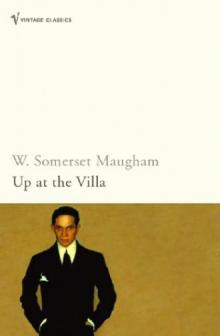 Up at the Villa
Up at the Villa The Razor's Edge
The Razor's Edge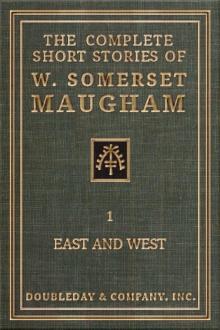 The Complete Short Stories of W. Somerset Maugham: East and West (Vol. 1 of 2))
The Complete Short Stories of W. Somerset Maugham: East and West (Vol. 1 of 2))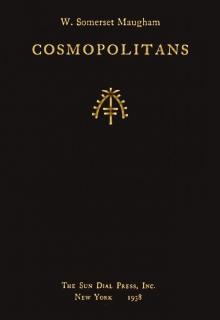 Cosmopolitans
Cosmopolitans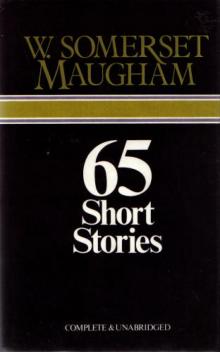 65 Short Stories
65 Short Stories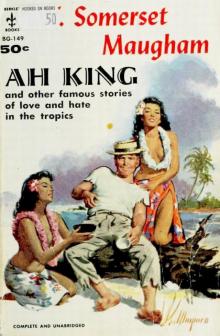 Ah King (Works of W. Somerset Maugham)
Ah King (Works of W. Somerset Maugham)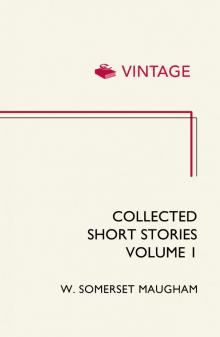 Collected Short Stories: Volume 1
Collected Short Stories: Volume 1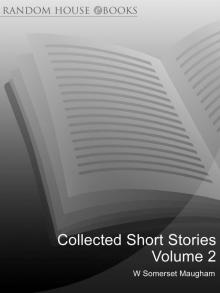 Collected Short Stories Volume 2
Collected Short Stories Volume 2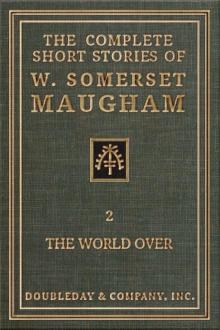 The Complete Short Stories of W. Somerset Maugham - II - The World Over
The Complete Short Stories of W. Somerset Maugham - II - The World Over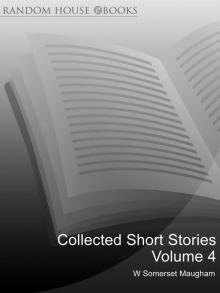 Collected Short Stories Volume 4
Collected Short Stories Volume 4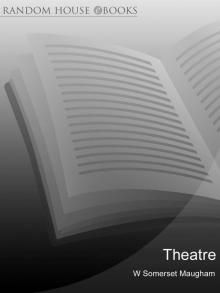 Theatre
Theatre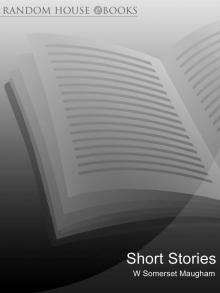 Short Stories
Short Stories Then and Now
Then and Now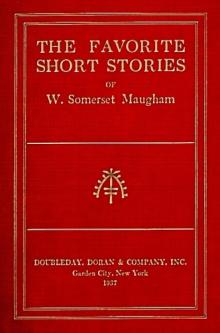 The Favorite Short Stories of W. Somerset Maugham
The Favorite Short Stories of W. Somerset Maugham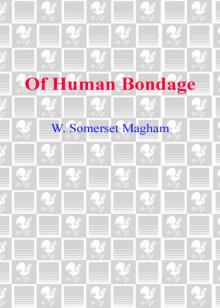 Of Human Bondage
Of Human Bondage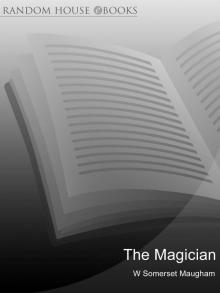 The Magician
The Magician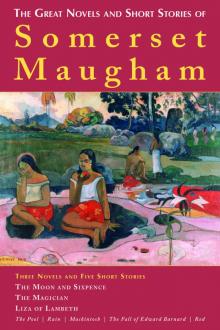 The Great Exotic Novels and Short Stories of Somerset Maugham
The Great Exotic Novels and Short Stories of Somerset Maugham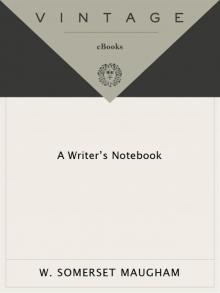 A Writer's Notebook
A Writer's Notebook Christmas Holiday
Christmas Holiday The Making of a Saint
The Making of a Saint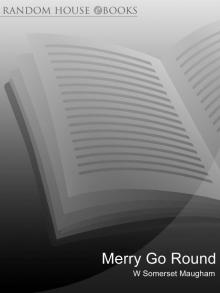 Merry Go Round
Merry Go Round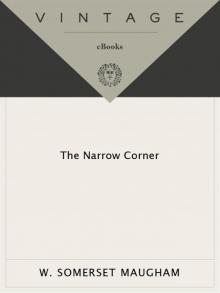 The Narrow Corner
The Narrow Corner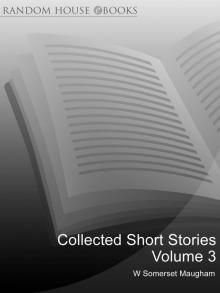 Collected Short Stories Volume 3
Collected Short Stories Volume 3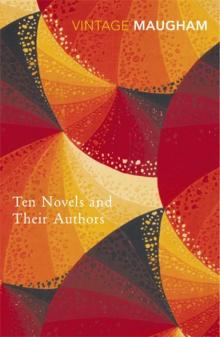 Ten Novels and Their Authors
Ten Novels and Their Authors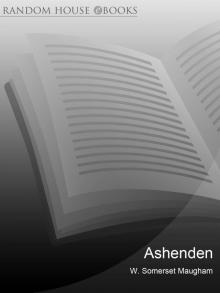 Ashenden
Ashenden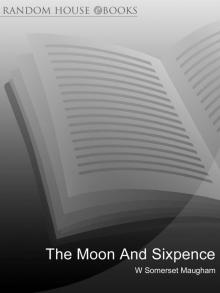 The Moon and Sixpence
The Moon and Sixpence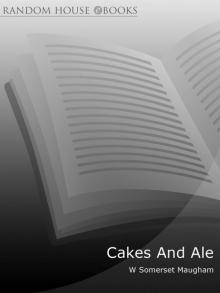 Cakes and Ale
Cakes and Ale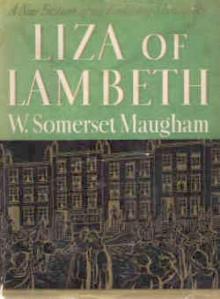 Liza of Lambeth
Liza of Lambeth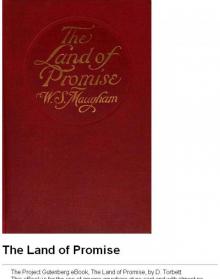 The Land of Promise: A Comedy in Four Acts (1922)
The Land of Promise: A Comedy in Four Acts (1922)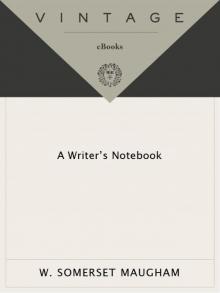 A Writer's Notebook (Vintage International)
A Writer's Notebook (Vintage International)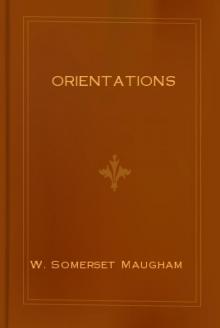 Orientations
Orientations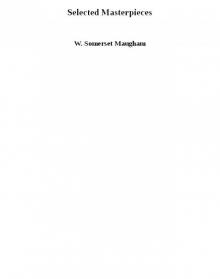 Selected Masterpieces
Selected Masterpieces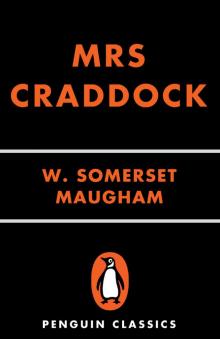 Mrs Craddock
Mrs Craddock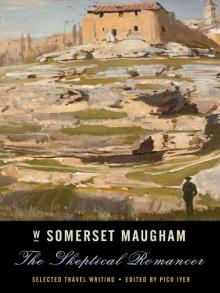 The Skeptical Romancer
The Skeptical Romancer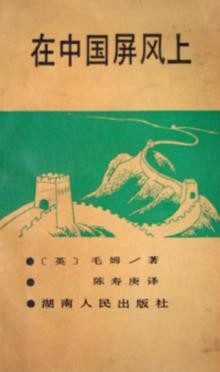 On a Chinese Screen
On a Chinese Screen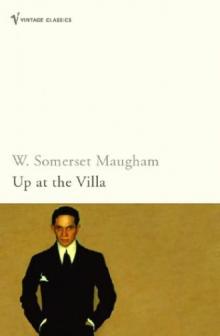 (1941) Up at the Villa
(1941) Up at the Villa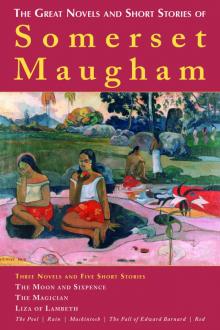 The Great Novels and Short Stories of Somerset Maugham
The Great Novels and Short Stories of Somerset Maugham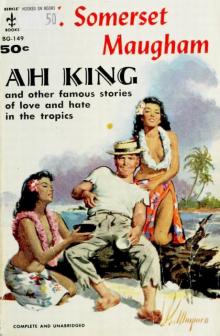 Ah King
Ah King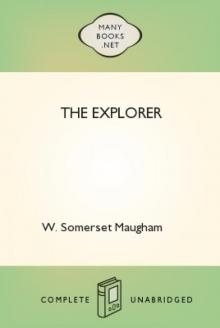 The Explorer
The Explorer The Skeptical Romancer: Selected Travel Writing (Vintage Departures)
The Skeptical Romancer: Selected Travel Writing (Vintage Departures) The Complete Short Stories of W. Somerset Maugham - I - East and West
The Complete Short Stories of W. Somerset Maugham - I - East and West